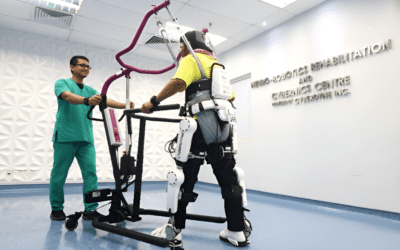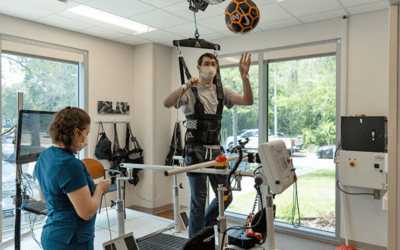Imagine if you could prepare your next presentation using only your thoughts. These scenarios might soon become a reality thanks to the development of brain-computer interfaces (BCIs).
A brain-computer interface, called a brain-machine interface or smart brain, is a direct communication pathway between the brain’s electrical activity and an external device, most commonly a computer or robotic limb.
Brain-computer interfaces – for the future?

Brain-computer interfaces (BCIs) are slowly moving into the mass market. In the next few years, we might be able to control our PowerPoint presentations or Excel files using only our brains.
BCIs acquire brain signals, analyse, and translate them into commands relayed to output devices carrying out desired actions. Companies might want to use BCI technology to monitor the attention levels and mental states of their employees
To put it in simple words, think of a BCI as a bridge between your brain and an external device. As of today, we mostly rely on electroencephalography (EEG) — a collection of methods for monitoring the electrical activity of the brain — to do this. But, this changing.
By leveraging multiple sensors and complex algorithms, it’s now becoming possible to analyse brain signals and extract relevant brain patterns. Brain activity can then be recorded by a non-invasive device – no surgical intervention is needed. The majority of existing and mainstream BCIs are non-invasive, such as wearable headbands and earbuds.
The development of BCI technology was initially focused on helping paralysed patients control assistive devices using their thoughts. However new use cases are being identified all the time. For instance, BCIs can now be used as a Neurofeedback training tool to improve cognitive performance. It could detect that your attention level is too low compared with the importance of a given meeting or task and trigger an alert.
Clinical Applications of Brain-Computer Interfaces

Brain-computer interfaces (BCIs) allow their users to communicate or control external devices using brain signals rather than the brain’s normal output pathways of peripheral nerves and muscles. Motivated by the hope of restoring independence to severely disabled individuals and by interest in further extending human control of external systems, researchers from many fields are engaged in this challenging new work.
Individuals who are severely disabled by disorders such as cerebral palsy, brainstem stroke, spinal cord injuries, muscular dystrophies, or chronic peripheral neuropathies can benefit from BCIs.
Potential BCI users could be:
- People who have no detectable remaining useful neuromuscular control are thus totally locked in.
- People who retain only a very limited capacity for neuromuscular control such as weak eye movements or a slight muscle twitch, and
- People who retain substantial neuromuscular control and can readily use conventional muscle-based assistive communication technology.
Neurorehabilitation
In addition to the uses for communication and control, BCI systems also have the potential to serve as therapeutic tools to help people whose neuromuscular function has been impaired by trauma or disease to relearn useful motor function. Neurorehabilitation using BCI systems promotes functional recovery and may improve quality of life.
This specific application of BCI systems seeks to augment current rehabilitation therapies by reinforcing and thereby increasing the effective use of impaired brain areas and connections.
Conclusion
A brain–computer interface (BCI) functions as a bridge between the brain and an external device, typically a computer. BCIs collect, analyse, and translate electrical signals from the brain into commands that can be understood and executed by a computer.
They can also apply external signals to modulate the brain. Thanks to a combination of neuroscience, biomedicine, physics, and technology, BCIs can change the lives of people with serious medical conditions. They can also be applied across robotics, neuroscience, technology, gaming, and computing.
So, connect with us at www.rehabmodalities.com to learn more about our rehabilitation therapy.
To know more write to us: info@rehabmodalities.com



